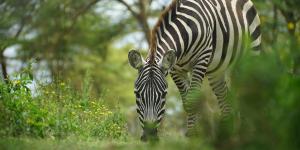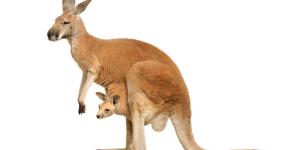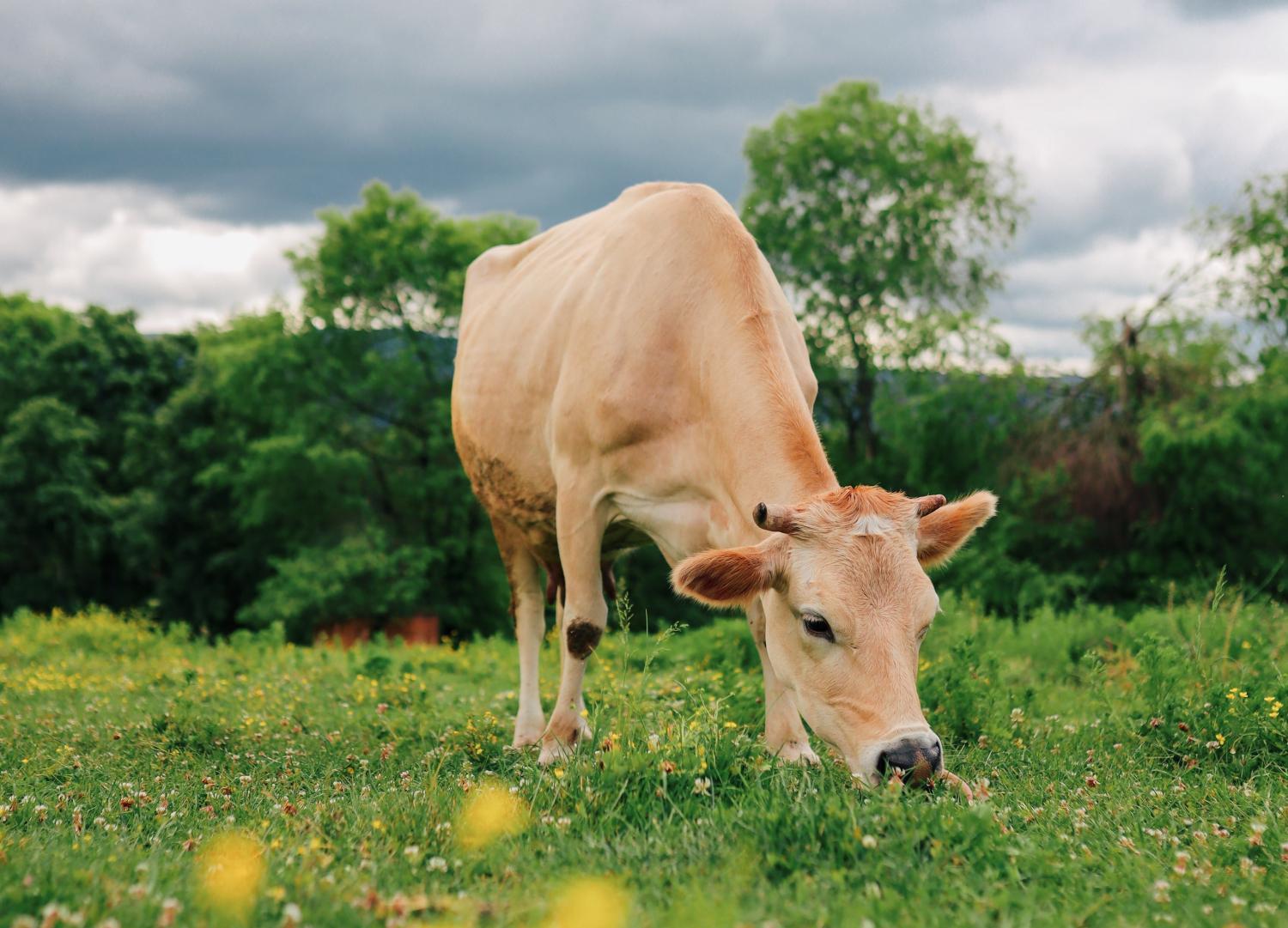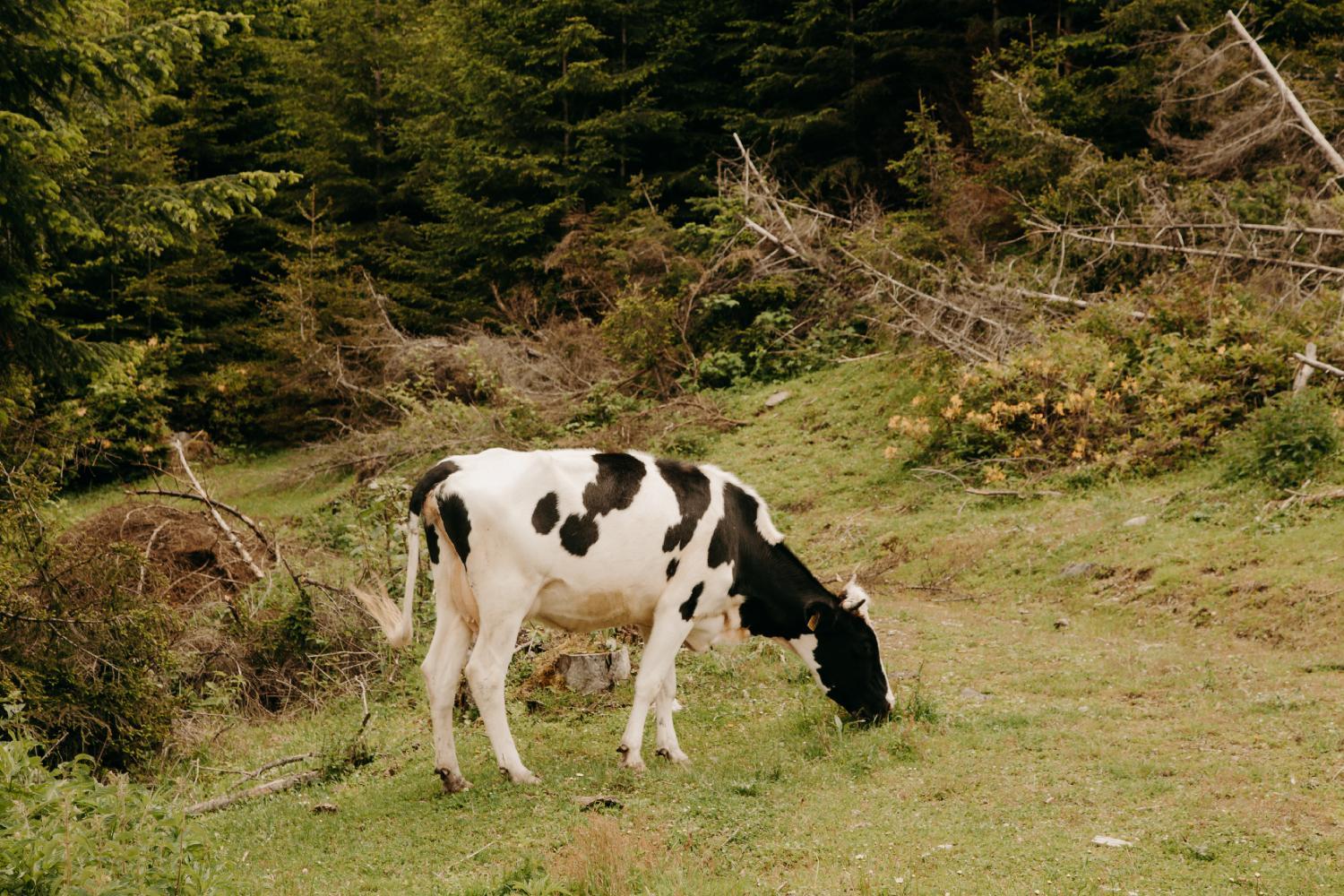What Do Cows Eat Besides Grass?


Cows and bulls are herbivores that feed mainly on plant food. The diet of cows and bulls consists mainly of roughage such as hay, grass, silage, and straw. These animals are ruminants, meaning they have a four-chambered stomach designed to digest and extract nutrients from fibrous plant material. The nutritional needs of cows and bulls can vary depending on factors such as age, breed, sex, and activity level. To ensure optimal health, growth and productivity, it is important to provide a balanced diet that meets the specific requirements of the animals.
The following AnimalWised article explains what cows and bulls eat besides grass, including essential information about their nutritional needs and some fascinating facts about their diet.
Digestive process of cows and bulls
Cows and bulls are strictly herbivorous animals that survive solely on a plant-based diet. These animals can consume several kilograms of grass each day, which undergoes a complex digestive process.
Unlike carnivorous animals, cows, and bulls do not have sharp teeth to tear meat or claws to chase prey. Instead, they have flat teeth for crushing and chewing plant material, and their hooves are adapted for grazing grass. Their digestive system is also specialized for breaking down and extracting nutrients from fibrous plant material.
Cows and bulls are ruminants, meaning their stomachs are divided into four chambers: Rumen, Reticulum, Omasum and Abomasum. Here is an overview of their digestive process:
- After the plants are crushed by the teeth, they enter the rumen where they mix with bacteria that break them down.
- The food then enters the reticulum, where it is further broken down into rumen and returned to the mouth, where it is further chewed. This process is called "cud-chewing,"
- The food is swallowed again and enters the omasum and abomasum, where digestive enzymes break it down and absorb the nutrients.
- The small intestine, large intestine, appendix, and colon complete the digestive process and absorb all the necessary nutrients, minerals, and water for adequate nutrition. Undigested substances are excreted in the feces.
Cows and bulls are known for their ability to efficiently convert plant material into high-quality meat, milk, and other animal products, making them an essential part of the agricultural industry.
Bulls have different dietary requirements, especially when it comes to the amount of protein they need for growth and maintenance. Bulls require more protein in their diet compared to cows, as they have higher muscle mass and require more energy to maintain their body weight. We will explain this in more detail in the following sections.
For more information, see this other article, where we discuss how many stomachs cows have and why.
What do baby cows eat?
Baby cows, or calves, feed primarily on milk for the first few months of their lives. Like all mammals, cows produce milk to feed their young. The milk provides all the necessary nutrients, vitamins, and minerals that the calf needs for its growth and development.
As calves get older, they begin the transition to solid food and graze on grass and other forages. Weaning usually occurs at 6–8 weeks of age. At this time, the calf begins to eat more solid food and less milk. The introduction of solid food also helps complete the maturation process of the calf's intestine.

What do adult cows eat?
As mentioned before, cows are strictly herbivorous, and their diet is primarily based on forage, which includes:
- Grasses
- Legumes
- Herbaceous plants
Silage and hay are also commonly used to feed cows, especially during the winter months when grass is not available.
However, it is important to note that depending on the animal's intended use, the diet is adjusted to meet the animal's nutritional needs. While both beef and dairy cows can eat grass, hay and silage, beef cows rely more heavily on corn and other grains. This is because the main goal of beef cattle is to maximize weight gain and meat quality, while the goal of dairy cows is to promote and maintain milk production.
In addition, other factors such as the age, weight, and growth stage of the animal may also affect nutrient requirements, so adjustments may need to be made.
What do dairy cows eat?
Dairy cows require a high-energy, high-protein diet to promote milk production. Their diet typically includes grass, silage, hay, and concentrated feeds like corn, soybeans, and other grains.
In addition, dairy cows may be given mineral supplements to meet their nutrient requirements.
What do beef cattle eat?
Beef cattle can be fed a higher-fiber, lower-energy diet to promote muscle tissue growth and development. Beef cattle are fed similar to dairy cows in their early life. As calves, they are usually fed milk or milk substitute and then switched to solid feed containing hay, grass, and grain.
However, as they age, their diets are switched to higher grain and protein content, such as:
- Corn
- Soybean meal
- Distillers grains
These promote weight gain and marbling of the meat. In addition, beef cattle are often raised on pasture or rangeland and have more opportunities to graze freely, while dairy cattle are usually housed in pens and receive a more controlled diet.

What do bulls eat?
Although both are herbivores, bulls have different nutritional needs than cows. One of the main differences in the diets of bulls and cows is the amount of protein they require for growth and maintenance.
Proteins are essential nutrients needed to build and repair body tissues, including muscle, bone, and organs. Bulls require more protein in their diet than cows because they have greater muscle mass and therefore need more energy to maintain body weight.
Do not miss this other article where we explain what is the difference between an ox and a bull.
How much does a cow eat a day?
The amount of food that a cow eats per day can vary depending on factors such as its size, age, activity level, and whether it is a dairy cow or beef cow. However, on average, a cow will eat around 2.5-3% of its body weight in dry matter per day.
This means that a 1,000-pound cow would eat around 25–30 pounds of dry matter per day. Bulls may eat slightly more due to their larger size and higher protein needs.
You may also be interested in this other article, where we discuss why cows are sacred in India.
If you want to read similar articles to What Do Cows Eat Besides Grass?, we recommend you visit our Healthy diets category.
- Lanuza, F. (2006). Calf rearing and dairy replacements . Available at: http://nutriciondebovinos.com.ar/MD_upload/nutriciondebovinos_com_ar/Archivos/RESTRICCI%C3%93N.pdf
- University of Minnesota Extension. (n.d.). Beef cattle nutrition. Retrieved from https://extension.umn.edu/beef-cattle/beef-cattle-nutrition
- DeVries, T. J., & Steele, M. (2019). Dairy cattle nutrition. University of Guelph. Retrieved from https://www.uoguelph.ca/~mdsteele/4580/Dairy_Nutrition_Chapter_2019.pdf







